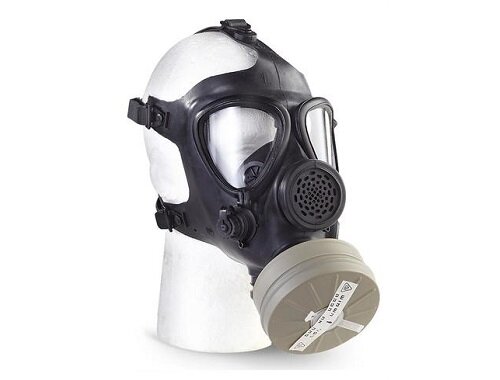Protection Against Toxic Chemical Weapons
Since World War I, military organizations of all major forces have acquired defensive equipment to cope with emerging offensive chemical weapons. The first and most important line of defence against chemical agents is the individual protection provided by gas masks and protective clothing and the collective protection of combat vehicles and mobile or fixed shelters.
Filters for masks and shelters contain specially treated activated charcoal, to remove vapours, and paper membranes or other materials, to remove particles. Such filters typically can reduce the concentration of chemical agents by a factor of at least 100,000. Masks can be donned in less than 10 seconds and can be worn for long periods, even in sleep. Gas mask is made of fabrics containing active charcoal or other forms of adsorptive carbon.

The fabric can breathe and pass water-vapour perspiration. In warm weather, the period of heavy activity in full protective equipment must be limited to avoid heat pressure. Also, removing such equipment in a contaminated environment will increase the risk of being a victim of death, and therefore it must be removed within toxic-free shelters after following decontamination procedures at the shelter entrance.
Chemical detectors have been developed to help identify the levels and places of contamination. This includes litmus paper processed chemically used to determine the existence of chemical agents. Other sensors may include handheld tests, vehicles equipped with spoons and laboratory analysis tools, and point sensors and standoffs. The automatic field alarm system was employed by several military forces to warn personnel about chemical agents.
